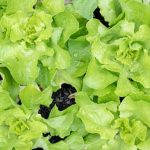Portable vegetable gardening beds offer a convenient and flexible solution for gardeners who may have limited space or want the ability to easily move their garden. These portable options allow for the growing of vegetables in a compact and manageable manner, providing an alternative to traditional in-ground gardening. From raised beds to fabric pots, there are numerous options available for those looking to explore this versatile method of gardening.
With the increasing popularity of urban gardening and the rise of small-space living, portable vegetable gardening beds have become a valuable resource for many individuals. Whether you’re a seasoned gardener or just starting out, these beds offer countless benefits such as flexibility, convenience, and ease of maintenance. In this article, we will explore the various types of portable gardening beds, the benefits they offer, and how to choose the right one for your specific needs.
By understanding what portable vegetable gardening beds are and their advantages, you can begin to take advantage of this practical gardening method. With step-by-step instructions on setup and guidance on selecting the best vegetables for compact spaces, you can embark on your own portable garden journey with confidence. Get ready to discover the world of portable vegetable gardening beds and reap the rewards of fresh produce right at your fingertips.
Types of Portable Vegetable Gardening Beds
Portable vegetable gardening beds come in a variety of options, each catering to different gardening needs and preferences. The most common types include raised beds, fabric pots, and other innovative designs tailored to make vegetable gardening on the go easier and more efficient.
Raised beds are typically made of wood or metal frames that are filled with soil, while fabric pots are soft-sided containers that provide excellent drainage for growing healthy plants. Other options may include stackable planters, vertical gardens, and collapsible containers, offering flexibility for gardeners with limited space.
Raised beds are a popular choice for portable vegetable gardening due to their versatility and ease of use. They can be placed on any surface, including concrete patios or compacted soil, making them ideal for urban gardeners with limited access to open ground.
Fabric pots are another excellent option for those seeking portability, as they are lightweight and easy to move around as needed. Additionally, their superior drainage promotes healthier root systems and prevents waterlogging, which is crucial for successful vegetable growth.
When selecting the right portable vegetable gardening bed for your needs, it’s essential to consider factors such as size, material durability, and ease of assembly. Raised beds come in various sizes and heights, allowing gardeners to customize their setup according to the space available and their preferred planting depth.
Fabric pots also offer size options but excel in their collapsible design, making them effortless to store when not in use. Ultimately, the best choice will depend on individual gardening goals and constraints.
| Type of Portable Gardening Bed | Main Features |
|---|---|
| Raised Beds | Versatile placement on any surface; customizable sizes and heights |
| Fabric Pots | Lightweight; excellent drainage; collapsible design for easy storage |
Benefits of Portable Gardening Beds
Portable vegetable gardening beds offer numerous benefits to gardeners, including flexibility, convenience, and ease of maintenance. These portable beds are designed to be versatile and adaptable, making them an ideal option for those with limited space, mobility issues, or a desire for on-the-go gardening.
Flexibility
One of the key advantages of portable vegetable gardening beds is their flexibility. These beds can be easily moved from one location to another, allowing gardeners to optimize sunlight exposure or make room for other activities in their outdoor space. Additionally, their mobility makes it possible to bring the garden indoors during inclement weather or extreme temperatures.
Convenience
The convenience of portable vegetable gardening beds cannot be overstated. Whether you are a renter, have limited outdoor space, or simply want the ability to relocate your garden as needed, these beds offer a solution that is both practical and efficient. They also eliminate the need for extensive digging or permanent installations, making them an attractive option for those looking for a low-maintenance way to grow vegetables.
Ease of Maintenance
Maintaining a portable vegetable gardening bed is relatively straightforward compared to traditional in-ground gardens. The raised nature of many portable beds reduces the need for bending or kneeling while tending to plants, which can be beneficial for individuals with physical limitations.
Additionally, these beds are often designed with materials that promote proper drainage and aeration, leading to healthier root systems and less risk of overwatering. Overall, the ease of maintenance associated with portable vegetable gardening beds makes it an appealing choice for both beginner and experienced gardeners alike.
How to Choose the Right Portable Gardening Bed
When choosing the right portable gardening bed for your needs, there are several factors to consider that will ensure you have a successful and thriving garden. The first thing to think about is the size of the space where you plan to set up your portable vegetable gardening bed.
If you have a smaller area, fabric pots might be the best option as they can fit in compact spaces and are easy to move around. On the other hand, if you have more room to work with, raised beds provide ample space for a variety of vegetables and can be easily transported if needed.
Another important factor to consider is the material of the portable gardening bed. Fabric pots are lightweight and breathable, which can be beneficial for certain types of plants, while raised beds can be made from wood, metal, or plastic. Each material has its own advantages and it’s essential to choose one that will provide adequate support and drainage for your vegetables.
Lastly, consider the mobility of the portable vegetable gardening bed. If you need to move your garden around frequently due to changing sunlight or weather conditions, look for options with built-in wheels or handles for easy transportation. Additionally, consider how easy it is to disassemble and reassemble the bed if you need to relocate it.
Overall, selecting the right portable vegetable gardening bed involves considering the size of your space, the material of the bed, and how easily it can be moved. By taking these factors into account, you can find a gardening bed that suits your specific needs and allows you to grow healthy and vibrant vegetables with ease.
| Factors to Consider | Considerations |
|---|---|
| Size of Space | Consider whether you have a small or large area for gardening |
| Material | Think about whether fabric pots or raised beds would be more suitable for your plants |
| Mobility | Determine how often you may need to move your portable vegetable gardening bed |
Setting Up Your Portable Gardening Bed
Choosing the Right Location
Before assembling your portable vegetable gardening bed, it’s crucial to choose the right location. Look for a spot that receives ample sunlight, as most vegetable plants thrive in full sun. Also, consider the accessibility of water and the convenience of tending to your garden bed. Remember that since it is portable, you may want to move it around, so select an area that allows for easy relocation if needed.
Assembling Your Portable Gardening Bed
Once you have chosen the perfect spot, it’s time to assemble your portable gardening bed. The process will vary depending on the type of bed you have – whether it’s a raised bed or a fabric pot. Follow the manufacturer’s instructions carefully and ensure that all pieces are securely fastened together. For raised beds, you may need to add a layer of gravel or small rocks at the bottom before filling it with soil.
Placement of Vegetables
After setting up your portable gardening bed, it’s time to decide which vegetables you want to grow. Consider the size and depth of your bed when choosing what to plant. Compact vegetables such as lettuce, radishes, and herbs are great options for smaller beds, while larger vegetables like tomatoes and peppers may require a deeper container. Take into account each plant’s specific sunlight and spacing requirements before placing them in your portable gardening bed.
By following these step-by-step instructions for assembly and placement, you’ll be well on your way to enjoying fresh home-grown vegetables from your portable vegetable gardening beds.
Best Vegetables to Grow in Portable Gardening Beds
When it comes to portable vegetable gardening beds, the options for what you can grow are quite diverse. Whether you’re working with raised beds, fabric pots, or other portable options, there are plenty of vegetables that thrive in compact garden spaces. Here’s a guide to some of the best vegetables to consider growing in your portable gardening bed:
- Tomatoes: These versatile and popular vegetables can be easily grown in containers and provide a bountiful harvest.
- Herbs: Culinary herbs like basil, parsley, and mint are perfect for portable gardening beds and can add fresh flavor to your meals.
- Peppers: Bell peppers and chili peppers do well in containers, making them an excellent choice for compact gardens.
- Lettuce and Salad Greens: These quick-growing crops are ideal for portable gardening beds and can be harvested continuously for fresh salads.
In addition to these popular options, you can also consider growing radishes, carrots, and even small varieties of cucumbers and squash in your portable vegetable gardening bed. The key is to choose vegetables that don’t require a lot of space to spread out their roots or vines. With the right care and maintenance, you can enjoy a thriving mini-garden filled with delicious produce right at your fingertips.
Whether you’re limited on outdoor space or simply want the flexibility of being able to move your garden around, portable vegetable gardening beds offer an amazing solution. By choosing the right vegetables for your compact garden space and providing them with the care they need, you can enjoy a plentiful harvest without traditional garden constraints.
Tips for Maintaining Your Portable Gardening Bed
Portable vegetable gardening beds offer a convenient and flexible way for gardeners to grow their own vegetables, particularly in urban areas or spaces with limited outdoor accessibility. Once you have selected the right portable gardening bed for your needs and have successfully set it up, it is important to maintain it properly to ensure long-lasting success. Here are some essential care and maintenance practices for your portable vegetable gardening bed:
- Regular watering: Since portable gardening beds typically have limited space for soil and water retention, it is important to water them regularly. Check the moisture level of the soil frequently and adjust your watering schedule as needed, especially during hot or dry weather.
- Weeding: Keep an eye out for any weeds that may sprout in your portable gardening bed. As soon as you spot them, pull them out carefully to prevent them from taking over valuable space and nutrients that should be reserved for your vegetables.
- Fertilizing: Depending on the type of soil or growing medium used in your portable gardening bed, you may need to add fertilizer periodically to ensure your vegetables receive the necessary nutrients for healthy growth. Follow the instructions on the fertilizer packaging for best results.
In addition to these basic maintenance practices, it is also important to monitor the overall health of your plants regularly. Look out for any signs of pests or disease, and take prompt action if any issues arise. With proper care and maintenance, your portable vegetable gardening bed can provide you with a bountiful harvest throughout the growing season.
Remember that different types of portable gardening beds may require specific care and maintenance practices based on their design and materials used. Be sure to familiarize yourself with any particular requirements associated with your chosen option to optimize its performance.
By following these essential care and maintenance practices, you can ensure long-lasting success with your portable vegetable gardening bed and enjoy a fruitful harvest of homegrown vegetables.
Success Stories
Portable vegetable gardening beds have revolutionized the way urban and suburban gardeners can enjoy growing their own fresh produce. These innovative gardening solutions are designed to be mobile, compact, and adaptable, making them an excellent choice for individuals with limited outdoor space or those who may need to relocate their gardens frequently.
Whether it’s a raised bed, a fabric pot, or another type of portable gardening bed, these setups offer numerous advantages for growers looking to cultivate vegetables on the go.
One gardener in a small city apartment found great success using fabric pots to grow a variety of vegetables on her balcony. With limited outdoor space, she was able to easily move her portable gardening beds around to maximize sunlight exposure and experiment with different layouts. In doing so, she was able to cultivate a bountiful harvest of tomatoes, peppers, and herbs without the need for a traditional garden plot.
In a similar vein, a couple living in an RV has been able to maintain their love for gardening by using raised portable vegetable beds. With the ability to disassemble and reassemble their garden as they travel from one location to another, they have been able to consistently enjoy fresh vegetables throughout their journeys.
This use of portable gardening beds has not only provided them with access to healthy produce but has also added beauty and liveliness to the areas outside their RV.
Conclusion
In conclusion, portable vegetable gardening beds offer a myriad of benefits for gardeners of all levels. From the flexibility to move your garden to the convenience and ease of maintenance, these compact growing spaces provide an excellent solution for those with limited outdoor space or who want the ability to easily relocate their garden.
Whether you opt for raised beds, fabric pots, or another option, portable gardening beds give you the freedom to grow your own fresh produce no matter where you live.
When choosing the right portable gardening bed for your needs, consider factors such as size, material, and drainage capabilities. Once you have selected the perfect bed for your space, follow step-by-step instructions for assembly and placement. Knowing which vegetables thrive best in portable gardening beds will also ensure a successful growing experience. Consider planting compact vegetables such as salad greens, herbs, radishes, and cherry tomatoes to make the most of your portable gardening space.
As you embark on your own journey with portable vegetable gardening beds, remember that proper care and maintenance is crucial for long-lasting success. Regular watering, fertilizing, and monitoring for pests and disease are essential practices to keep your plants healthy and productive. And don’t forget to seek inspiration from success stories of other gardeners who have found joy and abundance through their own portable gardens.
So what are you waiting for? Start your own portable garden journey today and enjoy the harvests of fresh vegetables right at your fingertips.

If you’re looking to get into vegetable gardening, or are just looking for some tips on how to make your current garden better, then you’ve come to the right place! My name is Ethel and I have been gardening for years. In this blog, I’m going to share with you some of my best tips on how to create a successful vegetable garden.





